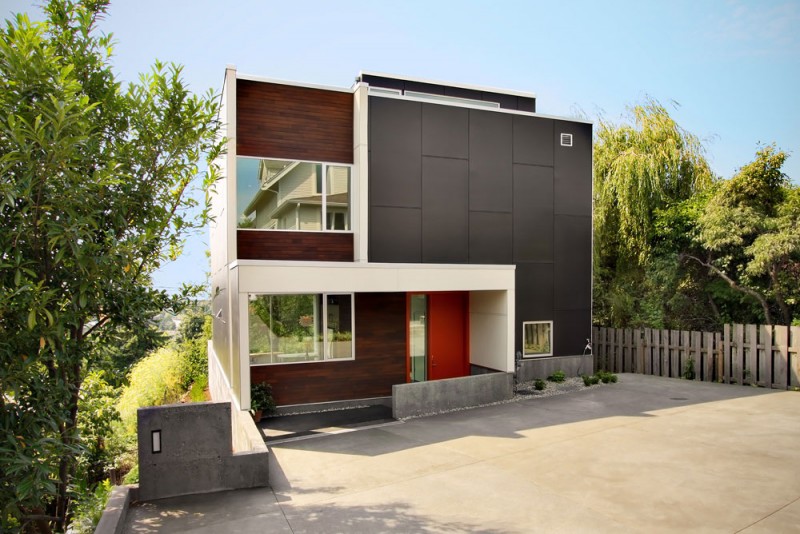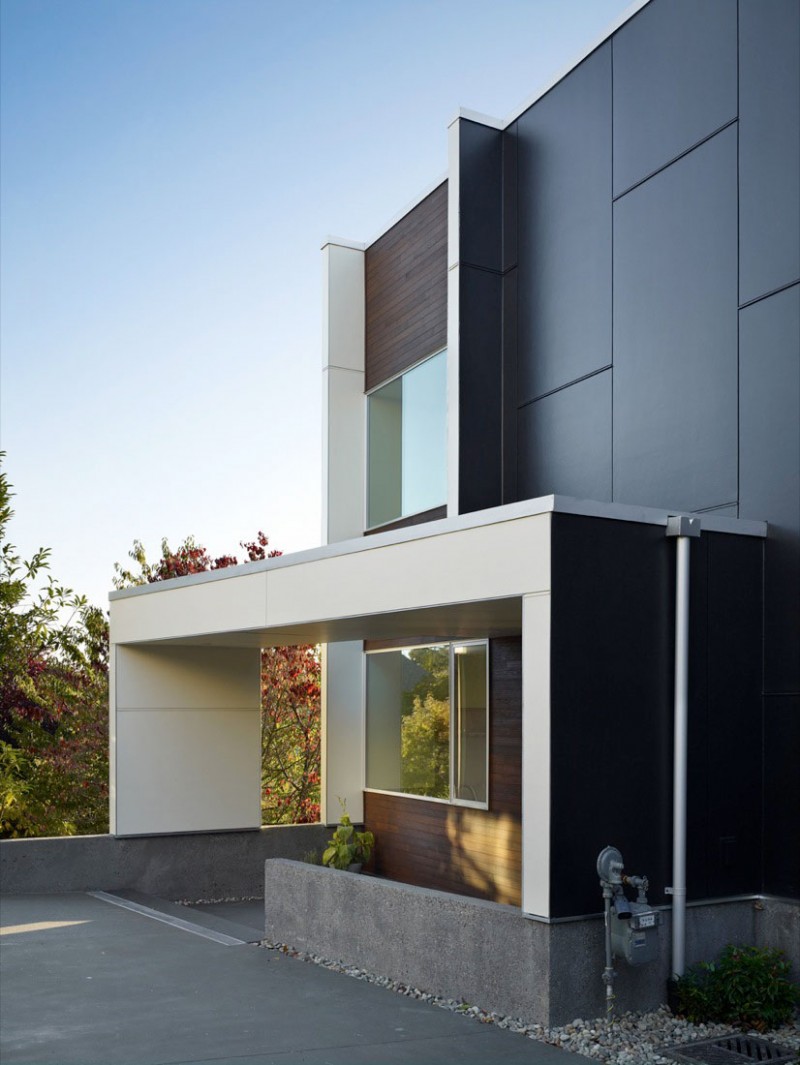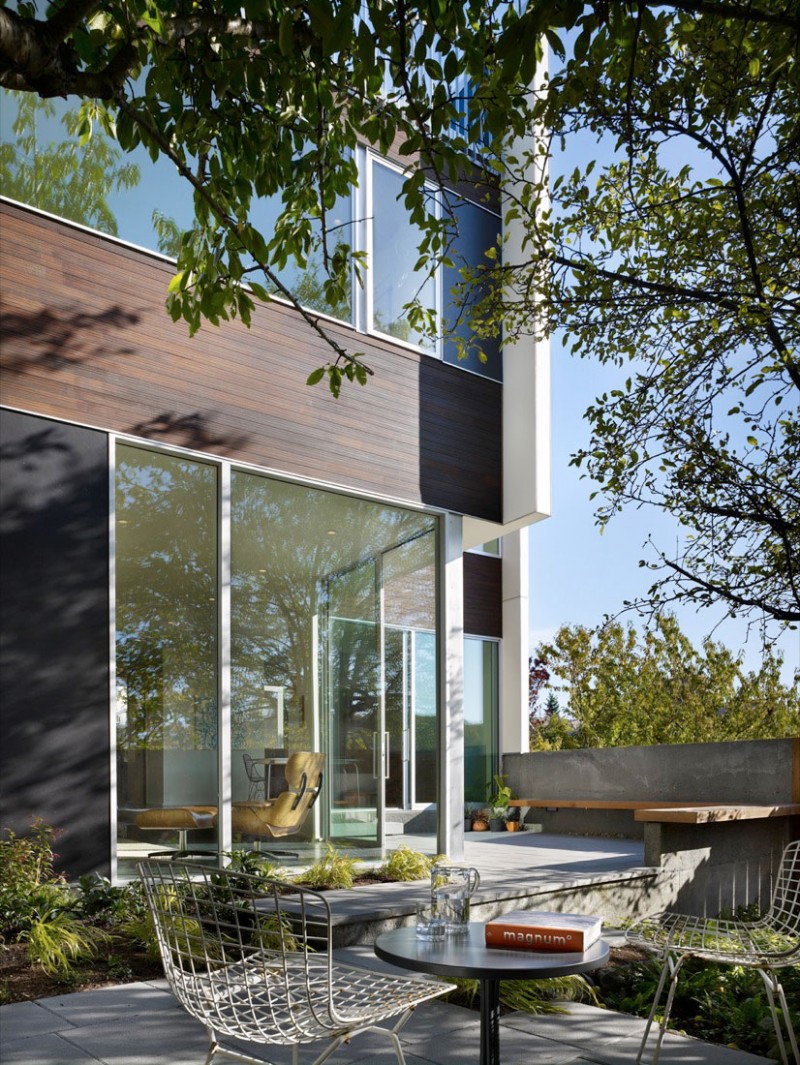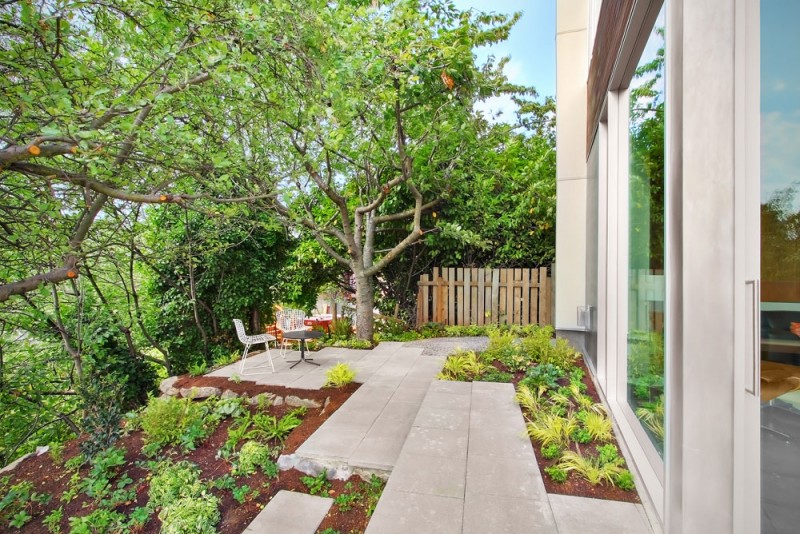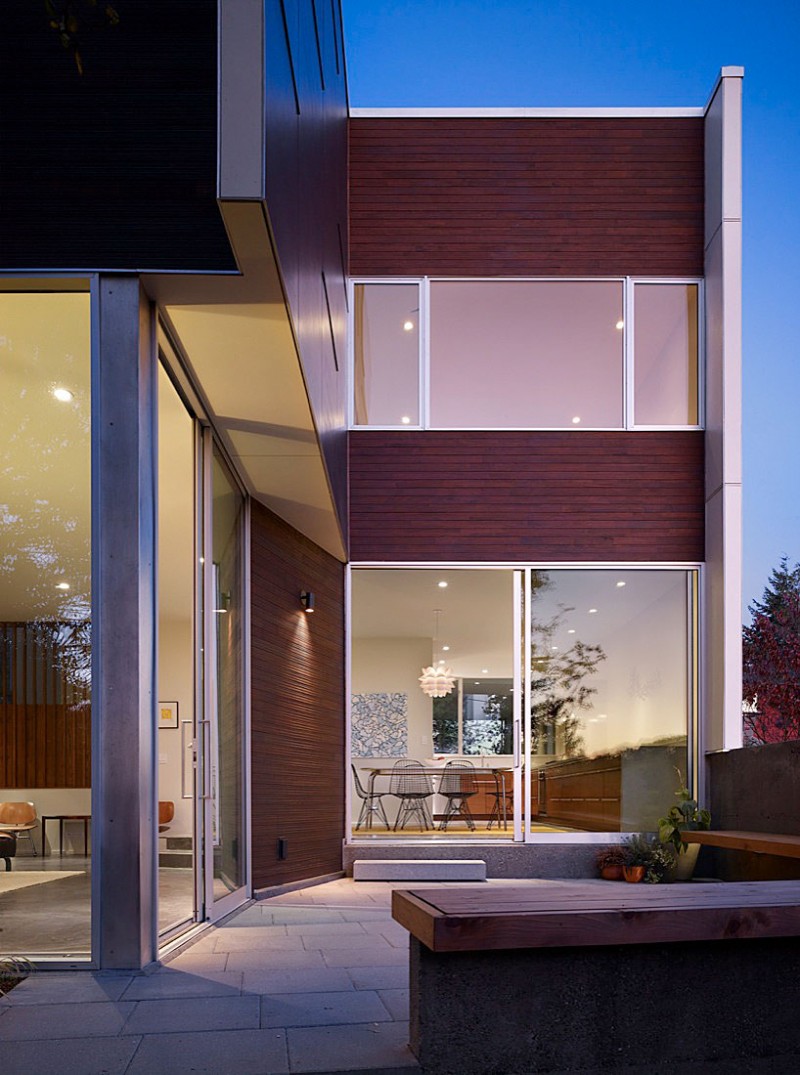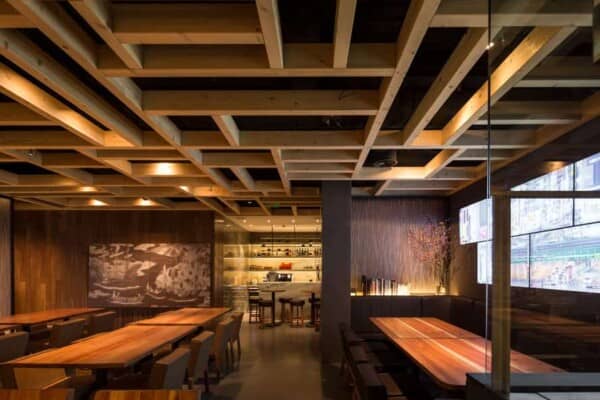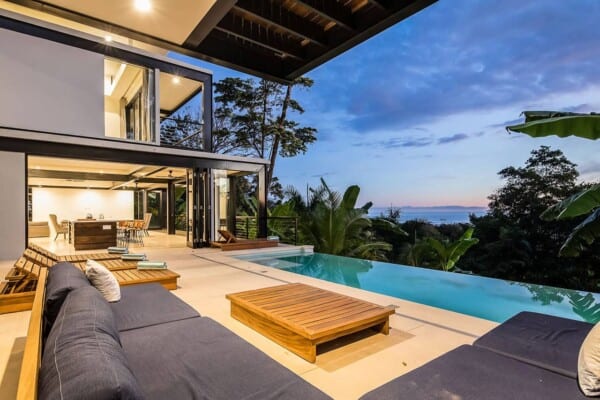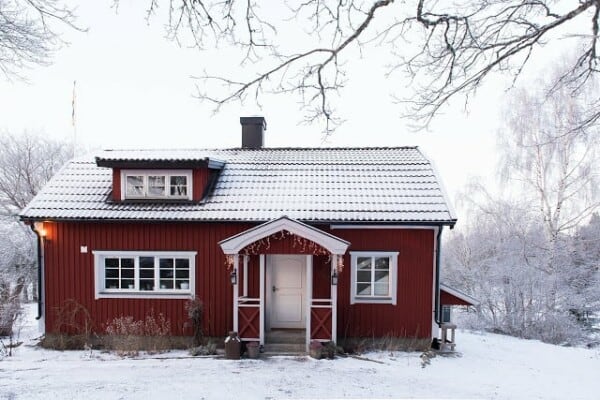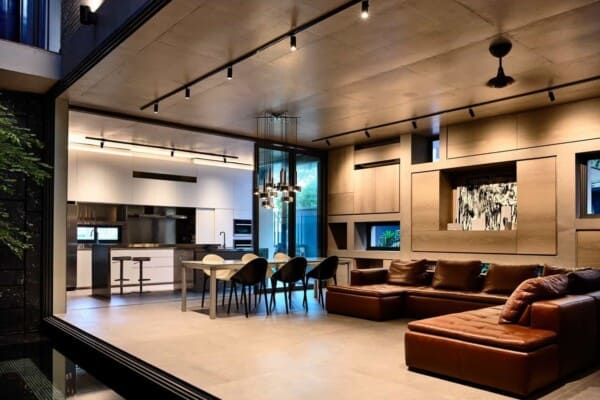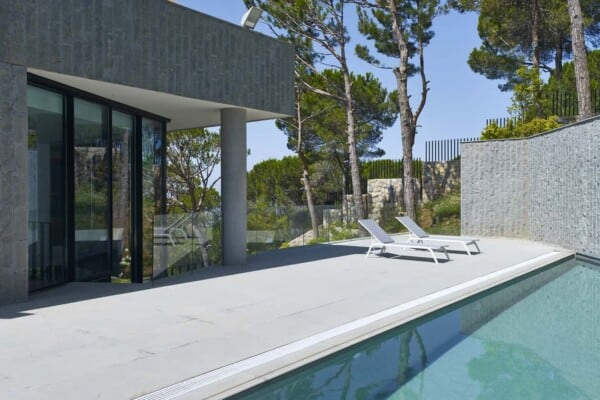Seattle-based studio SHED Architecture & Design has designed the Backyard House.
Completed in 2008, this 1,960 square foot, two story home with a roof-top terrace is located in Seattle, Washington, USA.
Backyard House by SHED Architecture & Design:
“Located in a central but marginal Seattle neighborhood, the Backyard House is a speculative infill development that takes its name from its site—the subdivided backyard of an existing single family house. The projects fundamental objective, to build an affordable house suited to a broad range of potential buyers, resulted in a program that emphasized economical construction, long term operational efficiency, a limited palette of durable materials, and the creation of bright, naturally lit spaces integrated with the site and views.
The house is situated on the western half of the lot on the edge of a bluff and reached via a driveway that runs through the side yard of the existing house. A mandated parking area that accommodates two cars and common infrastructure such as garbage, recycling and exterior storage creates a buffer between the houses.
At the ground floor a series of platforms step down through the interior to define distinct program elements and then re-emerge from the house as a terrace at the edge of the bluff. The intent was to enable inhabitants to experience the topography and for space to flow organically down through the building and its compact site. To define enclosure on these platforms, wall planes and infill glazing are organized to create a sense of both prospect and refuge within the house and site, as well as maximizing access to light in all rooms. A large kitchen window and porch engage the street, and floor to ceiling glazing in the dining and living rooms opens to the western terrace and to the view. Primary walls extend beyond the glazing to focus views and extend the threshold between inside and out. Walls, openings and platforms combine to create interconnected spaces that are open and protected, expansive and secluded.
The wood framed structure on concrete slab foundation contains living spaces, a small office, 3 bedrooms, and 2.5 baths on two floors totaling 1960 SF. The stacked stair continues to the roof level where a storage attic and roof terrace is located. The house provides basic amenities such as clear room planning with access to light, ample storage, and spaces that accommodate basic furniture layouts. Program elements were added or combined in small ways to improve use and function, including a large laundry zone in the second bathroom and an entry bench and mail/phone counter at the main entry. The result is a compact and efficient house that feels generous and integrated with its site and surroundings.
Project detailing and materials were direct, durable and economical. Exterior walls were clad with painted Fiber Cement Panels with areas of wood infill. Aluminum windows were used both for long term durability and to maximize glazing area for interior space. Sheetrock and traditionally detailed wood trim, all painted white, form the low cost background of the interior. The Ikea kitchen cabinets are topped by a counter and backsplash of Milestone cement veneer, a material also used extensively in the bathrooms. Aluminum trim was used at all window sills and mullions and wood paneling was used in the living room to add warmth and to impart a sense of refuge to the space. In every aspect the house strived for maximum design impact with a minimum number of materials and custom details.
Finally, the Backyard house incorporated common sense and affordable, sustainable materials and methods. The structure itself employed advanced framing to reduce wood usage by +/- 30% in combination with BIBS insulation to achieve a thermally efficient envelope. Additional solutions include the use of the stairwell and roof terrace access as a passive cooling and ventilation strategy through the stack effect. In combination with in-floor / radiator hydronic heat, a heat recovery ventilation (HRV) system ensures an efficient heating and ventilation system. Low/no VOC paints and finishes were used exclusively to exceed indoor air quality standards, while dual-flush toilets, Energy Star appliances, were used to minimize water and energy usage over the long term.”
Photos by: Benjamin Benschneider

